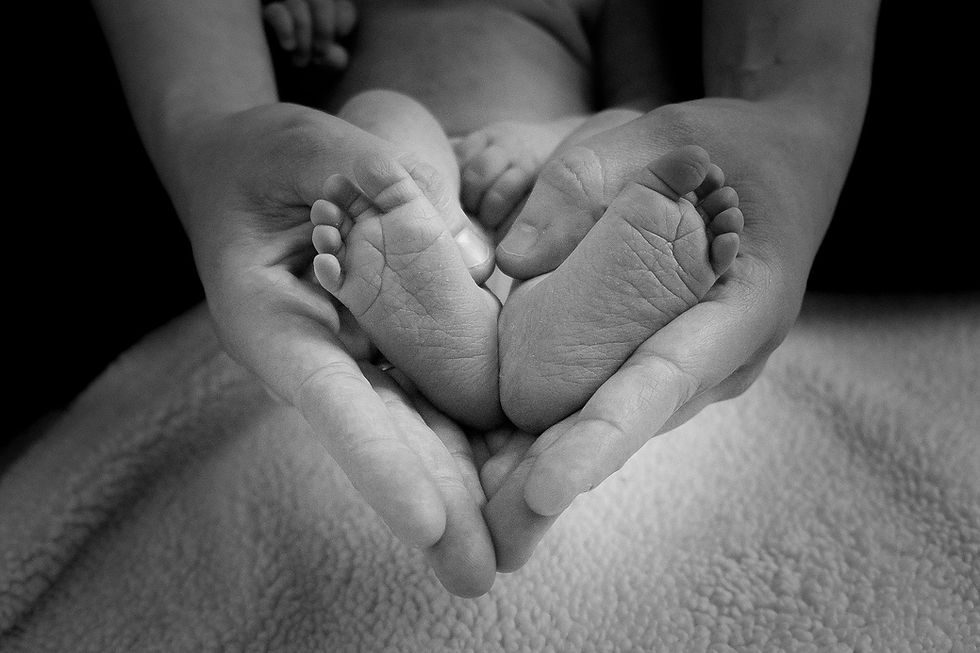Recovering After Pregnancy
- Excellence Physio

- Jan 4, 2021
- 4 min read
Updated: Nov 14, 2023

Congratulations on the arrival of your new baby! You may well be feeling on top of the world, or like you have been hit by a train, most likely a combination of the two!
Growing and delivering a baby into the world puts a huge strain on your body. One study by Duke University found that pregnant women were akin to endurance athletes in terms of the endurance required to grow and birth another human! Just as athletes allow their bodies recovery time, so should a new mum.
The 6 week check with your doctor is the traditional milestone when you are ticked off as being “fully recovered” and suitable to start exercising. If you are lucky enough to be getting some sleep, you might be really excited to get to buggy fit and reclaim your pre-baby physique. Social and print media shows us how “easy” this is, with perfectly filtered photos of celebrities showing off washboard abs 6 weeks after giving birth. A few women may fall into this group naturally but this doesn’t mean they are fully healed inside, the process of healing actually takes much longer and can’t be rushed.

The pelvic floor muscles (picture above is looking down from above on the bowl shape of the pelvis), along with nerves and connective tissues, form the sling that supports your womb, vagina, bladder and rectum within the pelvis. They naturally stretch during pregnancy and even more so with a vaginal delivery. For an uncomplicated birth, the tissue recovery time is approximately 4-6 months. For c-section deliveries, the connective tissue of the abdomen has been shown to take 6-7 months to regain 70-90% of its original strength. Abdominal separation in any type of delivery can take 12 months or more to come back together. With this in mind, you can see why it’s not just about a few quick pelvic floor exercises while you boil the kettle before you can return to impact or heavy exercise. The phrase “9 months in 9 months out” has roots in research!
These changes to the pelvic floor throw up some startling statistics not often talked about. Research found that 15-30% of first time mums will experience urinary incontinence (involuntarily leaking wee when you sneeze/cough/laugh) and at 3-6 months post-natally, just over half of new mums will have a degree of pelvic organ prolapse. Sadly too many women accept this as “normal” and try to remedy the situation with too much too soon at the gym or fitness classes which dramatically increases the load on the healing tissues and can make matters worse.
However, it’s not all doom and gloom. A team of specialist physiotherapists recently put together the first ever set of research-based guidelines for return to running in the post-natal period. We can use the principles to apply to any form of training or sports. With the help of a pelvic health physiotherapist, you can rehabilitate your pelvic floor, core muscles and cardiovascular system in a safe, graded way. This ensures that you prevent future pelvic health problems whilst improving your overall fitness and strength. It’s not just about the gym either; when cuddling your beautiful cooing baby evolves into wrestling a furious 18 month old who doesn’t want to get into their car seat, strong muscles are necessary!
Excellence for Mums can guide you through these initial months with an evidence-based exercise plan tailored for you and your goals. If you are further into your journey as a Mum and feel pretty strong, we can screen you to assess your readiness to return to higher level physical activities like running and sports.
We are passionate about empowering and supporting women to protect their pelvic health so if you want to find out more, get in touch via email, Facebook or Instagram.
Claire
(Women's Health Physiotherapist)
For more information click on the button below.
Bø, K. Artal, R., Barakat, R., Brown, W. J., Davies, G. A. L., Dooley, M., Evenson, K. R., Haakstad, L. A. H., Kayser, B., Kinnunen, T. I., Larsénm K., Mottola, M. F., Nygaard, I., van Poppel, M., Stuge, B., Khan, K. M. (2017) Exercise and pregnancy in recreational and elite athletes: 2016/17 evidence summary from the IOC Expert Group Meeting, Lausanne. Part 3-exercise in the postpartum period. Br J Sports Med 51(21), pp.1516-1525.
Ceydeli, A., Rucinski, J. and Wise, L. (2005) Finding the best abdominal closure: an evidence-based review of the literature. Curr Surg 62, pp.220–5.
Goom, T., Donnelly, G. and Brockwell, E. (2019) Returning to running postnatal – guideline for medical, health and fitness professionals managing this population. [https://mailchi.mp/38feb9423b2d/returning-to-running-postnatal-guideline
Milsom, I., Coyne, K., Nicholson, S., Kvasz, M., Chen, C. and Wein, A. (2014). Global Prevalence and Economic Burden of Urgency Urinary Incontinence: A Systematic Review. European Urology, 65(1), pp.79-95.
Shek, K. and Dietz, H. (2010). Intrapartum risk factors for levator trauma. BJOG: An International Journal of Obstetrics & Gynaecology, 117(12), pp.1485-1492.
Thurber et al., (2019) Extreme events reveal an alimentary limit on sustained alimentary limit on sustained maximal human energy expenditure. Science Advances. 5(6)



Comments